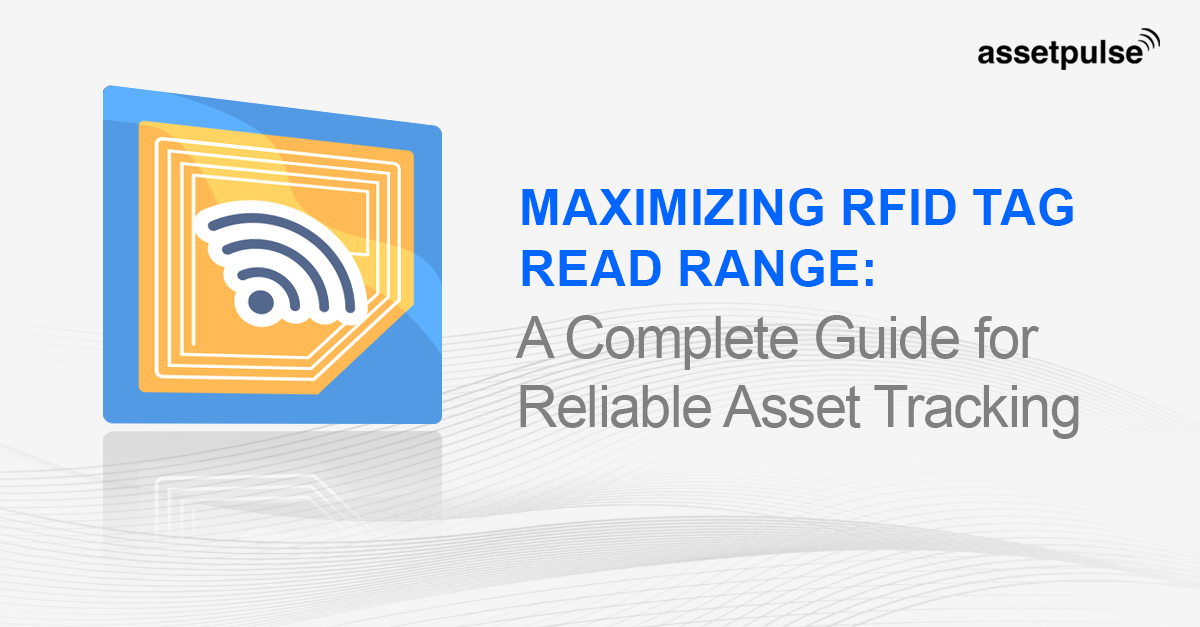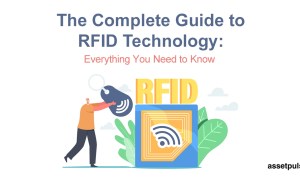Every RFID implementation hinges on one critical factor: read range. If your tags aren’t read at the right distance, you risk missed scans, inaccurate inventory counts, and frustrated teams. Whether you’re tracking lab samples, managing warehouse pallets, or securing data center servers, understanding RFID tag read range is vital to achieving seamless asset visibility and real-time location tracking.
Ready to Optimize RFID Tag Read Range for Full Coverage?
Learn industry-leading methods to extend your RFID tag read range!
Get Free ConsultationIn this blog, you’ll learn:
- What RFID tag read range means and why it matters
- The difference between short-range, mid-range, and long-range RFID systems
- Real-world RFID tag read distances for labs, manufacturing plants, warehouses, data centers, and medical device facilities
- Key factors that influence read range-like antenna power, tag orientation, and environmental interference
- Best practices to optimize your RFID setup for maximum coverage
Let’s dive in and turn variable read distances into predictable performance.
What is RFID Tag Read Range?
RFID tag read range (also called RFID read distance) refers to the maximum space between a reader and tag where successful communication occurs. In simple terms, it’s how far away your RFID reader can “see” a tag. Read range depends on:
- Frequency Band: LF (125 kHz), HF (13.56 MHz), UHF (860-960 MHz), and Active RFID (433 MHz or 2.45 GHz).
- Tag Type: Passive tags capture energy from the reader’s signal, offering read ranges from a few centimeters up to 30 feet. Active tags carry their own battery, extending read distances to hundreds of feet.
- Reader Power & Antenna Gain: Higher transmit power and directional antennas boost range but must comply with regional regulations.
Understanding these variables helps you choose the right combination of RFID frequency ranges and tag technology for your use case.
Why Read Range Matters for RFID Implementations
- Accurate Inventory Counts
Too short a read range leads to missed tags, resulting in incomplete cycle counts or stock discrepancies. - Efficient Throughput
In busy environments like warehouse receiving docks or manufacturing conveyor lines, a reliable mid-range read distance (2-6 feet) ensures every tag is scanned without slowing operations.

- Secure Access Control
For data centers and cleanrooms, long-range or active RFID allows automated door access logging from a distance, improving compliance processes. - Reduced Labor Costs
When your tags reliably read at the right distance, you eliminate manual scanning steps and reduce human error in asset tracking workflows.
Want flawless RFID coverage across your assets?
Optimize your RFID tag read range for seamless, blind-spot-free asset tracking
Get Free ConsultationTypes of RFID Tag Read Ranges
| Read Range Category | Typical Distance | Frequency & Tag Type | Common Use Cases |
| Short-Range | < 1 ft (30 cm) | LF or HF Passive (13.56 MHz) | Lab sample tubes, wearable asset tags, library tracking |
| Mid-Range | 1-6 ft (0.3-2 m) | UHF Passive (860-960 MHz) | Warehouse pallet tracking, conveyor systems, retail inventory |
| Long-Range | 6-30 ft (2-10 m) | UHF Passive/Active | Yard management, dock door portals, outdoor asset monitoring |
| Extended Range | 30-300 ft (10-100 m) | Active RFID (433 MHz, 2.45 GHz) | Vehicle access control, high-value equipment tracking, data center cabinets |
RFID Tag Read Ranges by Industry Use Case
1. Laboratories & Research Facilities
- Typical Read Range: 6-12 inches (15-30 cm)
- Tags & Readers: HF passive tags on sample vials; desktop HF readers for bench side scans
- Benefits: Automated sample logging, reduced cross-contamination, real-time lab sample tracking
2. Manufacturing Plants
- Typical Read Range: 2-6 ft (0.6-2 m)
- Tags & Readers: UHF passive tags on work-in-progress assemblies; portal readers at station entry/exit
- Benefits: Improved workflow tracking, automated quality checkpoints, minimized production delays
3. Warehouses & Distribution Centers
- Typical Read Range: 4-20 ft (1.2-6 m)
- Tags & Readers: UHF passive tags on pallets; overhead readers in racking aisles
- Benefits: Faster cycle counts, automated dock door scanning, accurate inventory visibility
4. Data Centers & IT Asset Management
- Typical Read Range: 6-30 ft (2-10 m)
- Tags & Readers: Passive or active tags on server blades; fixed readers at cabinet doors
- Benefits: Secure access logging, automatic asset reconciliation, reduced downtime from misplaced servers
5. Medical Device Manufacturing
- Typical Read Range: 2–10 ft (0.6–3 m)
- Tags & Readers: UHF passive tags on device crates; handheld readers for quality audits
- Benefits: Seamless compliance reporting, end-to-end supply chain visibility, accelerated recall management
Ready to extend RFID read distance effortlessly?
Seamlessly expand your RFID tag read range for complete asset visibility
Get Free ConsultationFactors Affecting RFID Read Range
1. Tag Placement & Orientation
- Tags mounted on metal surfaces need spacers or specialized on-metal RFID tags.
- Antenna polarization (horizontal vs. vertical) should match the reader’s field.
2. Environmental Interference
- Liquids and metals can detune antennas-use HF for liquids (lab) and on-metal tags for metal assets.
- Maintain clear line-of-sight for optimal UHF passive performance.

3. Reader Power & Antenna Design
- Higher power extends range but may cause regulatory violations-balance ERP limits with performance needs.
- Directional antennas deliver focused read zones; circular antennas cover broad areas.
4. Tag Sensitivity & IC Chip
- Different tag ICs (integrated circuits) boast varying sensitivity levels, affecting minimum read power.
- Choose high-sensitivity tags for long-range or low-power scenarios.
Best Practices to Optimize RFID Read Range
- Conduct a Site Survey: Map out reader locations, tag placements, and interference sources before deployment.
- Test with Real Tags: Prototype with your actual tags and objects to validate read distances under operational conditions.
- Adjust Antenna Angles: Fine-tune orientation for maximum coverage and minimal cross-read errors.
- Use Multiple Readers: Overlapping read zones eliminate dead spots and ensure complete asset capture.
- Monitor Performance Metrics: Track read success rates, missed tag events, and throughput to continuously refine your setup.
Get the Read Range You Need
Understanding and optimizing RFID tag read range is the foundation of any successful asset tracking project. By selecting the right frequency band, tag type, and reader configuration, and by following best practices for placement and testing, you’ll unlock reliable real-time visibility, reduce manual labor, and achieve ROI faster.
Ready to maximize your RFID investment?
Explore AssetPulse’s range of tags and reader solutions.
Schedule a Free Consultation and see how precise read ranges can transform your operations.
FAQs
What is RFID tag read range?
RFID tag read range is the maximum distance between a reader and a tag where communication is successful. It varies from inches to hundreds of feet depending on frequency band, tag type (passive vs active), and environmental factors.
What are the factors that affect the read range of an RFID tag?
Key factors include frequency band (LF, HF, UHF), tag type (passive/active), reader power, antenna design, tag placement and orientation, environmental interference (metals, liquids), and the tag’s integrated circuit sensitivity.
How to improve RFID read range?
Optimize antenna placement and orientation, use higher-gain antennas, increase reader power (within regulations), choose appropriate frequency bands, use specialized on-metal tags for metal surfaces, minimize interference, and conduct proper site surveys.
What is the maximum read range achievable with passive RFID tags?
Under ideal conditions, passive UHF tags have a maximum read range of roughly 30 ft (10 m). HF tags typically read within 1 foot, while LF tags work within inches. Active tags offer read ranges of more than 100 feet, though they depend on batteries to operate.
How can RFID read range be optimized or extended?
Use directional antennas for focused coverage, optimize tag placement away from interference, adjust reader power settings, ensure proper antenna polarization alignment, deploy multiple readers for coverage zones, and select high-sensitivity tag ICs.
Is longer read range always better for RFID applications?
No, longer isn’t always better. Short ranges prevent cross-reads from nearby tags, reduce interference, and provide more precise location tracking. Choose read range based on your specific application requirements and environment.




